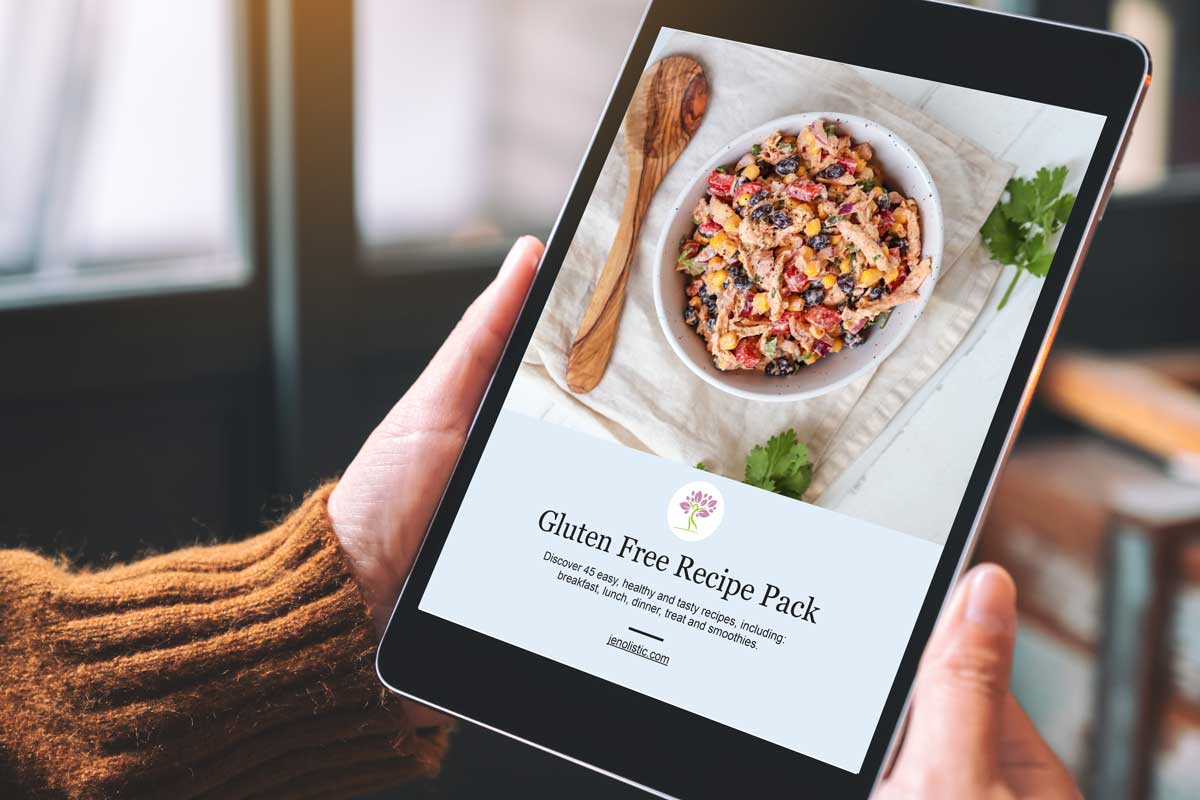This post may contain affiliate links, read more…
Switching to an organic, non-processed diet transformed my health in ways I never imagined. As someone living with Eosinophilic esophagitis (EoE), I was faced with a painful and frustrating condition that made it difficult to enjoy food. For years, I tried various treatments and medications, but nothing seemed to address the root cause of my symptoms. That all changed when I began focusing on organic, whole foods.
Through this journey, I learned how to navigate the world of organic food without breaking the bank. In this post, I’ll share practical tips on how to eat organic on a budget, as well as my personal experience with how switching to organic helped me manage my EoE.
Understanding the Benefits of Eating Organic
When I started eating organic, I wasn’t just looking for a dietary change—I was looking for a way to heal. My body had been reacting negatively to processed foods and allergens, and by shifting to organic whole foods, I experienced a significant improvement in my symptoms. But beyond my personal story, there are many reasons why choosing organic can have a lasting impact on our health and well-being.
One of the main reasons organic food is beneficial is the reduction of toxins in your diet. Conventional farming often uses synthetic pesticides, herbicides, and fertilizers, all of which can leave residues on the food we consume. These chemicals may not cause immediate symptoms in everyone, but over time, they can accumulate in our bodies and contribute to a range of health issues, including autoimmune conditions like EoE. By choosing organic, you minimize your exposure to these harmful substances, allowing your body to focus on healing rather than processing toxins.
Organic food isn’t just about what you don’t get; it’s also about what you do get. Organic farming practices focus on soil health and biodiversity, which leads to nutrient-rich produce. This means that organic fruits, vegetables, and grains often contain higher levels of vitamins, minerals, and antioxidants compared to their conventionally grown counterparts. For someone like me, whose body was already struggling with inflammation, the nutrient density of organic foods made a noticeable difference in how I felt day to day.
Additionally, organic foods can reduce exposure to allergens. For example, many non-organic processed foods contain artificial additives, preservatives, and genetically modified ingredients, all of which can trigger or worsen allergic reactions. For someone managing a condition like EoE, where food allergies play a major role, eliminating these unnecessary ingredients from my diet was crucial. By focusing on clean, whole foods, I was able to create meals that didn’t aggravate my condition.
In summary, the benefits of eating organic go far beyond avoiding toxins—they can enhance your overall health by providing nutrient-dense foods that support your body’s natural healing processes. For me, transitioning to an organic lifestyle was a key step in managing my EoE, and while it might seem like an expensive change at first, the benefits for your health and well-being make it a worthy investment in the long run.
Myths About the Cost of Eating Organic
One of the biggest misconceptions about eating organic is that it’s too expensive for the average person. Many people believe that switching to an organic diet will dramatically inflate their grocery bills, making it inaccessible to most. While it’s true that organic products can sometimes carry a higher price tag than conventionally grown ones, there are plenty of ways to eat organic without blowing your budget. In fact, much of the perceived expense comes from misunderstandings about how to prioritize and shop for organic foods.
First, let’s address the idea that everything you eat needs to be organic. It’s easy to feel overwhelmed when faced with the prospect of replacing all your groceries with organic alternatives. However, the key is to prioritize. A helpful guideline to follow is the “Dirty Dozen” and “Clean Fifteen” lists, which highlight the most pesticide-laden produce and the least contaminated fruits and vegetables, respectively.
The Dirty Dozen, which includes items like strawberries, spinach, and apples, are foods you should try to buy organic if possible, as they tend to have higher levels of pesticide residue. On the other hand, the Clean Fifteen, which features foods like avocados, sweet corn, and pineapples, are typically safer to buy conventionally, as they have thicker skins or natural resistance to pests, which reduces pesticide use.
Another misconception is that buying organic means buying the most expensive, premium brands. In reality, many grocery stores now offer their own private-label organic options, which are often just as affordable as conventional brands. Shopping for store-brand organic products is a great way to save money while still getting the benefits of organic foods. Additionally, many people assume that organic pre-packaged foods, like snacks or ready-made meals, are necessary for an organic lifestyle, when in fact, these items can drive up your grocery bill. Focusing on whole, unprocessed foods like grains, legumes, fruits, and vegetables will not only reduce costs but also provide better nutrition.
It’s also important to recognize that eating organic doesn’t have to mean spending more money overall. By shifting your diet to focus on whole, natural ingredients, you’re likely to cut out processed foods and unhealthy snacks, which can make a significant difference in your total grocery bill. Plus, when you buy organic, you’re investing in your long-term health. Organic foods may help reduce your exposure to harmful chemicals and allergens, which can lead to fewer medical expenses down the road. In my own journey managing EoE, I found that focusing on organic whole foods not only improved my symptoms but also kept me from spending money on medications and treatments that weren’t addressing the root cause of my issues.
In short, while the price of organic food can sometimes seem intimidating, it doesn’t have to break the bank. By being strategic about which foods to buy organic, shopping store brands, and focusing on whole, nutrient-rich ingredients, you can enjoy the benefits of an organic diet without the financial stress. The key is to be mindful of where you’re spending and to recognize that eating organic is an investment in your health, not just an immediate expense.

Practical Ways to Save on Organic Groceries
Eating organic doesn’t have to come with a hefty price tag. With a little bit of planning and creativity, you can enjoy the benefits of organic foods while sticking to a budget. Here are some practical ways I’ve learned to save on organic groceries while maintaining my healthy lifestyle:
1. Buy in Bulk
One of the easiest ways to save money on organic food is to buy in bulk. Staples like rice, beans, oats, nuts, seeds, and flours are often available in bulk sections of health food stores or online retailers. Bulk purchases not only reduce packaging waste but also allow you to get more for your money. If you have the storage space, buying larger quantities of pantry staples at once can save you from paying premium prices on smaller, pre-packaged organic items. Azure Standard is one of my favorite places to buy in bulk.
2. Shop at Farmers’ Markets and Join CSA Programs
Supporting local farmers through farmers’ markets is a great way to find fresh organic produce at more affordable prices. Many local farmers skip the expensive certification process while still adhering to organic farming principles, so you can often find pesticide-free produce at a fraction of the cost of store-bought organic. Don’t be afraid to ask about their farming methods, even if they aren’t certified organic—they may still grow their crops without harmful chemicals.
Another option is to join a CSA (Community Supported Agriculture) program. With a CSA, you subscribe to receive a weekly or bi-weekly box of fresh, seasonal produce directly from a local farm. This is often a more cost-effective way to access organic fruits and vegetables, and it supports small-scale farmers. You may even get the opportunity to try new produce varieties that aren’t available in stores. Misfits Market is also a great place to check, they carry non-pretty but still good fruit and veggies.
3. Shop Seasonally
Buying produce that’s in season is another fantastic way to save on organic groceries. When fruits and vegetables are in season, they are more abundant and less expensive to grow, meaning you can often find them at lower prices. For example, strawberries are more affordable in the summer when they’re in season, while root vegetables like carrots and squash are typically cheaper in the fall and winter months. Additionally, seasonal produce is fresher, tastier, and more nutrient-dense.
4. Grow Your Own Organic Produce
If you have the space, growing your own organic fruits and vegetables is one of the most budget-friendly ways to ensure you always have access to fresh, toxin-free food. Even if you don’t have a large garden, you can start small with herbs, leafy greens, or tomatoes in pots on a patio or windowsill. Home gardening not only saves you money but also gives you control over how your food is grown. Plus, it’s incredibly rewarding to harvest your own produce!
5. Meal Planning and Cooking at Home
One of the biggest money-saving strategies when it comes to eating organic is meal planning. Planning out your meals for the week allows you to be intentional about what you buy and prevents impulse purchases of expensive organic snacks or pre-packaged meals. It also helps reduce food waste since you’ll only be buying what you need. See this post of my favorite meal planning tool.
Cooking at home is another essential part of eating organic on a budget. By preparing meals from scratch, you avoid the high cost of organic convenience foods and processed items. Homemade meals using simple, whole ingredients like grains, vegetables, and legumes can be both nutritious and affordable. For example, a big batch of organic vegetable soup or a hearty stir-fry can feed your family for days at a fraction of the cost of store-bought organic meals.
6. Utilize Freezer-Friendly Meals
Batch cooking and freezing meals is another cost-saving technique. Preparing meals in large quantities and freezing portions for later use allows you to buy ingredients in bulk and save time in the kitchen. It’s also a great way to ensure you always have a healthy, organic
Conclusion
Eating organic on a budget is not only possible, but it can also be an incredibly rewarding way to nourish your body and improve your overall health. By focusing on high-risk foods, buying in bulk, shopping seasonally, and incorporating meal planning into your routine, you can enjoy the benefits of organic food without straining your finances. For me, switching to an organic, non-processed diet was life-changing—it helped me manage my EoE symptoms and led to better long-term health. Remember, eating organic is an investment in your well-being, and with the right strategies, it’s an investment that can pay off for years to come.

Download your guide for free!
Learn how everyday products could be affecting your health and how simple swaps can lead to a cleaner, safer home.
Recent Posts
Share on Social

Grab your Free Gluten Free Recipe Pack
Discover 45 easy, healthy, and tasty recipes, including breakfast, lunch, dinner, treats and smoothies!
Recent Posts

How to get rid of ants the non-toxic way!



